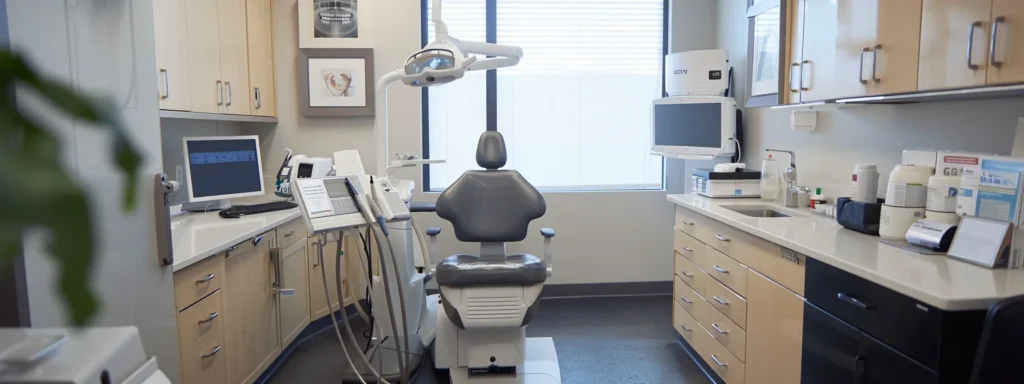Most dentists can spot teeth grinding damage. But treating the underlying sleep disorder requires specialized expertise. Camilla Ohl trains dental practices through Ohl Practice Management & Consulting to understand when bruxism cases need referral to comprehensive sleep centers. Her experience helping practices integrate sleep medicine reveals that specialized centers provide coordinated care addressing dental, medical, and psychological aspects simultaneously.
Sleep centers equipped to handle bruxism offer advanced diagnostics unavailable in typical dental offices. They use polysomnography to monitor sleep patterns and identify contributing disorders. Custom treatment plans combine clinical interventions with behavioral therapy. This multifaceted approach tackles root causes rather than just managing symptoms.
Why Specialized Centers Make the Difference
Comprehensive sleep centers provide integrated care that standard dental offices cannot match. Understanding their unique capabilities helps patients access appropriate treatment.
Advanced diagnostic technology reveals hidden causes. Polysomnography monitors brain activity, breathing patterns, and muscle movements during sleep. This detailed profiling identifies whether bruxism occurs alone or alongside other sleep disorders. Accurate diagnosis informs personalized treatment addressing specific underlying factors.
Tailored treatment plans combine multiple approaches. Custom oral appliances prevent tooth damage during grinding episodes. Stress reduction guidance lowers bruxism frequency. Behavioral therapy addresses psychological triggers. The goal extends beyond managing immediate effects to delivering lasting relief.
Here’s what comprehensive sleep centers provide:
- State-of-the-art sleep studies revealing root causes
- Custom oral appliances superior to commercial options
- Coordination between dental and medical specialists
- Behavioral therapy addressing stress and anxiety
- Treatment for co-occurring conditions like sleep apnea
- Ongoing monitoring and care plan adjustments
- Patient education about contributing factors
- Long-term follow-up ensuring sustained improvement
Multidisciplinary care coordination ensures treatment continuity. Patients receive input from dental specialists, sleep physicians, and psychologists within the same network. This pooling of expertise addresses all bruxism aspects simultaneously. Coordinated approaches typically produce better outcomes than fragmented care.
Addressing Every Dimension of Bruxism
Sleep bruxism involves dental, medical, and psychological components. Specialized centers treat all three dimensions comprehensively.
Dental interventions prevent deterioration from nightly grinding. Centers customize protective devices far superior to generic commercial options. These appliances get tailored to each patient’s unique dental structure. Custom design minimizes tooth wear and manages pain effectively.
| Treatment Component | What It Addresses | How Centers Deliver It |
| Dental Protection | Tooth wear, fractures, sensitivity | Custom-fitted oral appliances |
| Sleep Medicine | Sleep apnea, breathing disorders | Comprehensive sleep studies, CPAP if needed |
| Behavioral Health | Stress, anxiety, habits | Cognitive behavioral therapy, relaxation techniques |
| Neurological Assessment | Brain activity patterns | Polysomnography, EEG monitoring |
| Coordinated Care | All factors simultaneously | Multidisciplinary team approach |
Medical perspectives address physiological contributing factors. Thorough sleep analyses uncover related disorders like sleep apnea. These conditions often co-occur with bruxism. Recognizing and treating underlying disorders alleviates bruxism triggers. Comprehensive medical treatment plans prove more effective than isolated dental approaches.
Psychological components receive equal attention. Stress and anxiety widely exacerbate bruxism. Centers offer support extending beyond physical symptoms. Cognitive behavioral therapy helps patients manage stress reducing grinding incidence. Treating psychological alongside physical issues touches all disorder corners.
Understanding Bruxism’s Complex Origins
Sleep bruxism stems from genetic, neurological, and psychological roots. Specialized centers possess expertise to address each factor appropriately.
Genetic predisposition makes bruxism more than situational stress response. Some patients inherit tendencies toward grinding. This predisposition may remain dormant until triggered. Comprehensive assessments consider familial history ensuring treatment accounts for genetic contributions.
Neurological connections tie bruxism to brain activity during sleep. It can signal larger dysfunctions like obstructive sleep apnea. Advanced sleep studies detect disruptions revealing whether bruxism stands alone or accompanies complex neurological conditions. This distinction dramatically affects treatment approaches.
Psychological elements require integration into treatment plans. Stress and anxiety trigger or worsen grinding episodes. Care providers incorporate stress management and relaxation techniques therapeutically. This holistic approach acknowledges bruxism’s multifaceted nature ensuring psychological underpinnings aren’t ignored.
Evidence-Based Treatment Implementation
Specialized centers implement proven strategies delivering tangible results. Personalized approaches adapt to each patient’s specific condition.
Custom oral appliances form treatment cornerstones. Unlike generic mouthguards, these devices fit individual mouths perfectly. They mitigate grinding effects during sleep. Expert technicians craft appliances using precise measurements. Maximum comfort and protection prevent dental damage while reducing pain.
Cognitive behavioral therapy addresses psychosocial aspects. Trained behavioral therapists teach stress management strategies. Patients learn to alter behaviors contributing to nighttime grinding. Modified stress responses often reduce bruxism episodes significantly. This therapy enhances overall treatment plan effectiveness.
Treatment adaptability ensures ongoing optimization. Centers continuously monitor patient progress making necessary adjustments. This flexibility maintains improvement trajectories as patient responses evolve. Care plans get optimized matching changing needs. Treatment approaches depend on each patient’s unique bruxism patterns, stress levels, and co-occurring conditions. Working with specialized professionals ensures interventions address your specific situation comprehensively rather than applying standardized protocols.
Coordinated Care Advantages
Effective bruxism management requires seamless integration across healthcare domains. Specialized centers excel at unifying various specialists.
Interdisciplinary collaboration facilitates comprehensive understanding. Patients receive concurrent evaluations from dentists, sleep specialists, and behavioral health experts. Team approaches create well-informed treatment strategies responsive to multiple professional insights. This coordination surpasses isolated specialist consultations.
Shared protocols enhance treatment efficiency and clarity. Common guidelines synchronize efforts across involved professionals. Streamlined treatment plans result from this coordination. Reduced errors and improved patient safety follow naturally.
Patient experience improvements drive coordination efforts. Multidisciplinary teams reduce waiting times and improve communication. Support throughout every treatment stage ensures positive healthcare journeys. Better health outcomes result from these coordinated approaches.

Recognizing When Treatment Needs Adjustment
Dynamic bruxism management requires responding to triggers warranting care modifications. Regular assessments guide timely treatment enhancements.
Individualized evaluations determine intervention efficacy. Regular monitoring observes changes in episode frequency and symptom severity. These assessments guide decisions about maintaining current treatment or considering alternatives. Responsive care adapts to patient needs.
Protocol adaptation provides treatment flexibility. When initial approaches don’t yield desired results, experts introduce adjunctive therapies. Biofeedback or medication might enhance overall care plan effectiveness. This adaptability ensures treatments remain effective.
Treatment path flexibility accommodates life changes. As patients’ circumstances evolve affecting their bruxism, treatments must adjust accordingly. Updated strategies accommodate lifestyle shifts, medication changes, or general health variations. This ensures bruxism management remains relevant and effective long-term.
Comprehensive Support Systems
Specialized centers offer robust support extending beyond basic treatment. Multiple components work together ensuring optimal patient outcomes.
Advanced diagnostics enable accurate understanding. State-of-the-art tools reveal subtle signs missed by standard examinations. High-resolution imaging shows tooth wear patterns and jaw muscle tension. More accurate assessments lead to more effective treatment plans.
Patient advocacy empowers informed decisions. Centers educate about conditions and help navigate insurance coverage. Supporting informed care pathway decisions empowers patients throughout treatment journeys. This advocacy component distinguishes comprehensive centers from basic providers.
Ongoing care commitment ensures sustained support. Follow-up appointments, treatment plan adjustments, and continuous condition monitoring exemplify this dedication. Long-term outcome prioritization and patient satisfaction drive this holistic healthcare approach.
Proactive Prevention Strategies
Prevention-focused approaches curb bruxism progression before escalation. Early risk identification and management prove crucial.
Familial predisposition recognition enables proactive monitoring. Family medical history revealing grinding patterns suggests genetic links. Identified risk factors trigger closer monitoring and preventive measures. Stress management techniques or protective appliances mitigate early bruxism signs.
Patient demographics inform customized prevention. Age, lifestyle, and overall health influence bruxism onset and severity. Younger patients might benefit more from behavioral interventions. Older patients may require approaches considering medication impacts on sleep patterns.
Early intervention serves as prevention cornerstones. Starting treatment when initial symptoms appear allows multi-faceted modality alignment. Pairing oral appliance therapy with relaxation training prevents disorder progression. Camilla Ohl’s training programs help practices recognize when early intervention or specialist referral becomes necessary.
Transforming Bruxism Care
Specialized sleep centers represent comprehensive approaches to managing sleep bruxism. Diagnostic integration, treatment precision, and care coordination distinguish their patient-centered model.
Advanced diagnostics accurately detect bruxism nuances. Comprehensive sleep studies allow refined condition understanding. This groundwork enables precise treatment plans tailored to individual patient needs. Camilla Ohl’s work at Ohl Practice Management & Consulting, built on two decades of dental industry experience, trains practices to recognize when cases require this specialized level of care.
Treatment precision marks their personalized strategies. Custom-fitted oral appliances combined with behavioral therapies prove highly effective. Personalized approaches result in better outcomes and higher patient satisfaction. Care coordination ensures coherent treatment across all involved disciplines.
Seamless collaboration between healthcare providers delivers comprehensive support. This alliance ensures patients receive optimal guidance throughout recovery journeys. Contact Camilla Ohl for guidance on finding specialized sleep centers or to learn how dental practices can better identify patients needing comprehensive bruxism care.
Don’t let uncertainty hold you back. Schedule a consultation today and start building a thriving dental sleep practice with Ohl Consulting!
Ohl Practice Management & Consulting
connect@ohlpracticeconsulting.com
Frequently Asked Questions
Can specialized sleep centers really treat sleep bruxism effectively?
Specialized centers offer highly effective treatment through comprehensive approaches. Personalized oral appliances combined with sleep medicine and behavioral therapy address multiple contributing factors simultaneously. This integrated care proves more effective than isolated dental treatment. Most patients experience significant improvement within weeks of starting coordinated treatment protocols.
What kind of treatments do specialized sleep centers provide?
Centers provide custom-fitted oral devices preventing teeth grinding damage. They coordinate with sleep specialists addressing related disorders like sleep apnea. Cognitive behavioral therapy helps manage stress-related bruxism triggers. Treatment plans get tailored to each patient’s specific needs combining multiple approaches for optimal results.
Is care at specialized sleep centers worth the investment?
Comprehensive treatment addresses root causes rather than just symptoms. This approach delivers long-term relief and improved quality of life. While initial costs exceed basic dental guards, the investment prevents expensive future dental work. Better sleep quality, reduced pain, and prevented tooth damage justify the comprehensive care investment.
The information on this page is provided to help you understand general dental care and the preventive services we offer. It’s not a substitute for professional diagnosis or individualized treatment. Every patient’s needs are different, and your dentist will evaluate your oral health before recommending any specific care or procedure. (For personalized guidance, please schedule an appointment with a licensed dental professional.)





